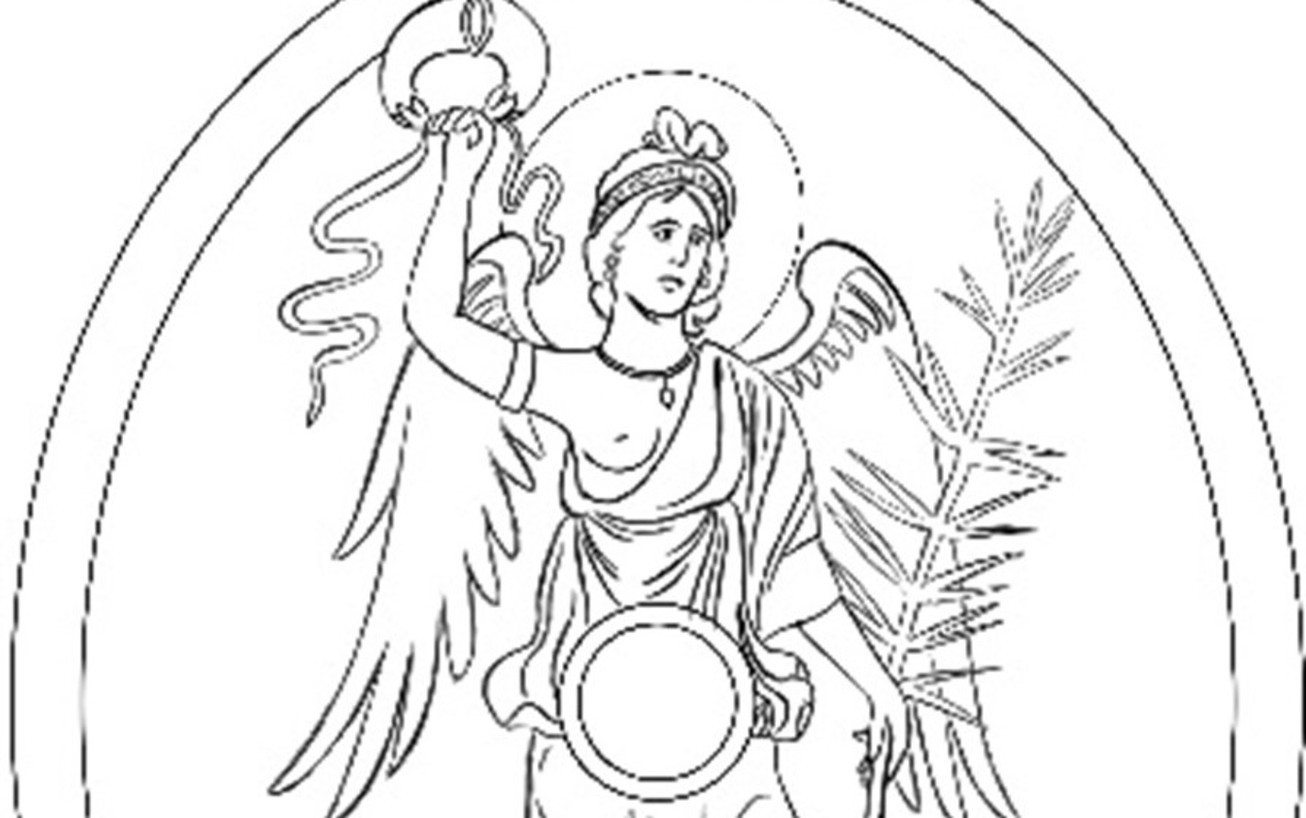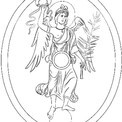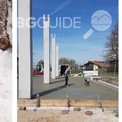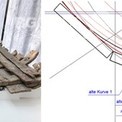
Roman Cruise on the Danube River in 2022
The LDL team is proud to share the shield design chosen for the project and the Danuvina Alacris. It was especially designed for the project following several Late Antique finds. The colour scheme is yet to be finalised, but Victoria as goddess of victory and success seems like an absolutely fitting choice for an endeavour physically linking the whole Danube Region and promoting the shared Roman heritage.
The Romans absorbed and carried on the shipbuilding traditions of the Mediterranean. With the expansion of the Roman Empire, local traditions of the Mediterranean were adopted, but also those of Mesopotamia and the regions north of the Alps. A distinction must be made between these, and the construction methods documented in the areas east of the Rhine, for example at the Danish Nydam Moor. The clinker construction method is found there, which will later be successful in the Viking boats. In contrast, the Mediterranean construction method is kraveel. Its characteristics are the smooth outer skin, and that the planks are butt jointed.
The focus now is on two of the boat types that are best preserved in the region north of the Alps, in Oberstimm (near Manching) and in Mainz. The older version (Oberstimm) clearly belongs to the Mediterranean building tradition. Grooves were cut out every 30 cm and oak springs inserted. They are locked in place by oak pins driven into the sides, about 6 cm long. The planking was done with pine and the robust side bracing (ribs), and longitudinal stiffening was done with oak.
The archaeological evidence for the later type of boat, which is also the best preserved in Germany, is found in Mainz. Some of the wrecks can be assigned to the Late Antique boat type “lusoria”. The excavation was led by Olav Höckmann, who also made the first interpretations regarding an assumed original length. Ronald Bockius then undertook a revision and ultimately the most reliable and recent publication for all the finds from Mainz. These ships were part of a Celtic-Roman building tradition. In contrast to the ship types of the older Roman period (the first and second centuries) in Oberstimm, which are clearly indebted to the Mediterranean building tradition. The Late Antique finds belong to a local building tradition.
The ships in the local building tradition used the hardest wood of the region, oak. Oak itself does not swim so well, but it is robust, and the planks also bend well thanks to the oak and because they are cut relatively thin (2.5 cm).
There have been uncertainties and a discussion on the length of the boat. While Höckmann, after various attempts, finally arrived at a length of 21.5 m (initially he had also arrived at a length of about 18 m), Bockius settled on a length of the two wrecks of no more than 18 m. While the longer version of almost 22 m poses ship-geometrical problems, the line drawings from Bockius (2006) seem to be closer to reality. Therefore, the LDL team (including Bockius) agreed to aim for the ideal-typical plan that was drawn according to modern criteria and guaranteed the hydrostatic ideal position in the water, and the found situation, in which individual frames were pushed down. This process has already begun with the building of the templates and had previously been prepared by the felling of the oaks (and spruces).
In Schlungenhof at the Altmühlsee, the oak trunks and the oak krummholz transported there before Christmas were sawn to size in mid-January. A team of students, boat builders, professional sawyers and volunteers sawed the oak logs according to the specifications. Exemplary Roman frame saws were also used. However, after initial difficulties, most of the timber was sawn with the modern mobile sawmill, which was specially brought from Bremen and can saw excess lengths (up to approx. 19.30 m). These sawn laths were well layered and secured so that they could dry.
As both a border river and part of the Roman Empire, the Danube has been an important line of communication north of the Alps since the last two decades of the first century BCE. Military patrol boats of the Oberstimm type for the early and middle Imperial period and the lusoria ships in Late Antiquity provided guard services or ensured troop transports en masse.
The article was developed within the project "Valorization of cultural heritage and promotion of sustainable tourism by reviving the common heritage of the Danube Limes as a basis for a cultural route", with the acronym Living Danube Limes, under the "Danube 2014-2020" Transnational Cooperation Programme.
National Tourism Cluster "Bulgarian Guide" is a key partner for Bulgaria in the project, responsible for the pilot region.


